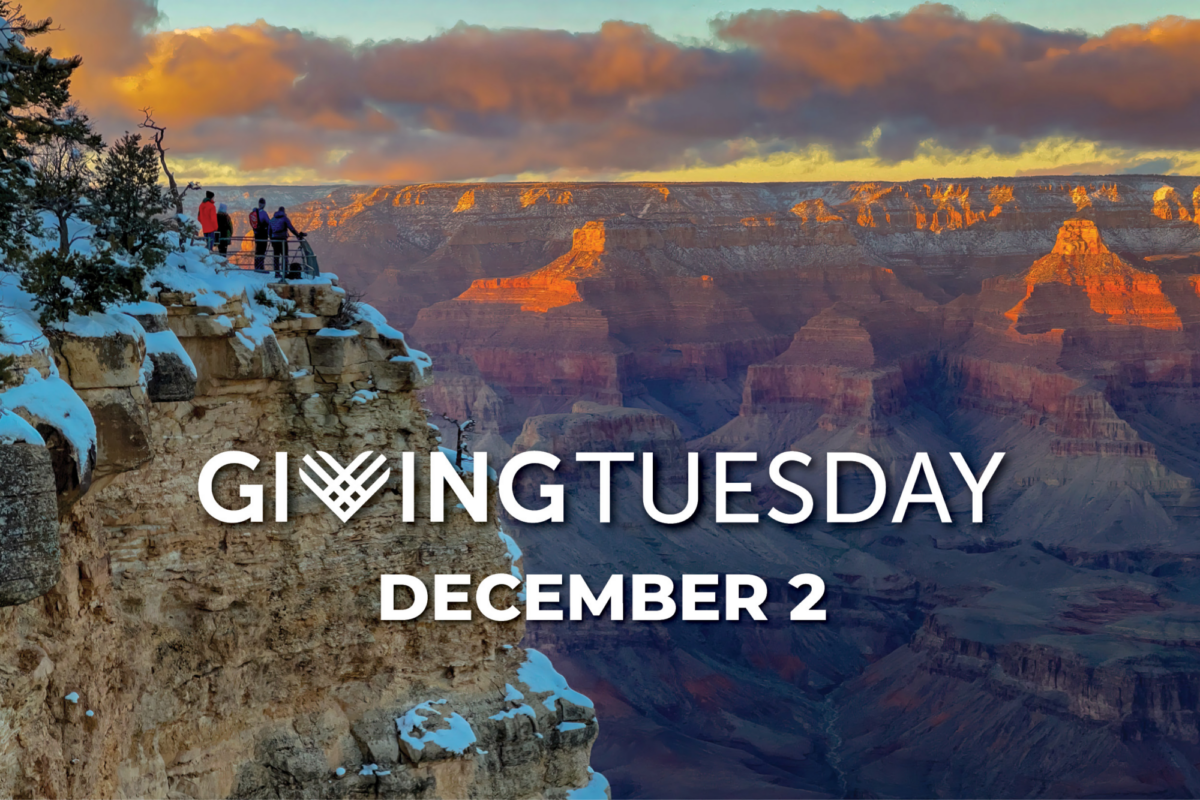Former Grand Canyon Astronomer in Residence on Public Lands
In this blog series, former Grand Canyon Artists and Astronomers in Residence reflect on the important role America's public lands play in art and science.

"So you're telling me Betelgeuse could explode basically any minute?" Steve asked, sighting along my outstretched arm to the bright red star in Orion's shoulder. The wiry, middle-aged hiker and I stood in a clearing of a narrow tributary valley in the bottom of Grand Canyon. Above us, Betelgeuse glowed in the dusk just above the flat tops of the steep, striated cliffs narrowing our visible sky. "But isn't it hundreds of light-years away? What if it already exploded and we just haven’t seen it yet?" “Maybe it did!” I laughed. “But we have no way of knowing until the light reaches us”.
Curiosity about time and the night sky fuels the most common questions I get at public stargazing events. People are fascinated with the idea that gazing up into space, like descending into the depths of Grand Canyon, is a way of peering back into the deep past. Astronomers don’t typically correct for the time it takes light to arrive from the celestial objects we study, in part because those objects are all at different (and often unknown!) distances away from Earth. But looking upward from the canyon’s floor, surrounded by layers upon layers of geological history, I felt the allure of picturing the stars as signposts in time as well as space: doing this helps us envision the intangible concept of cosmological time and connect it to our experiences in the present day.

It's easy to forget, especially living in a culture of such immediate connection, that our short lives are embedded in a vast sea of cosmic time. We may know intellectually that the Sun is only halfway through its five-billion-year lifetime, or that the seemingly immutable rocks and rivers we see today were shaped by ongoing geological processes over eons of Earth’s history. But these timescales are difficult to contemplate because they dwarf anything we can experience directly.
Both the geographical layer cake of Grand Canyon and the ancient starlight punctuating the darkness overhead compress immense lengths of time into a form we can comprehend. Like tree rings and ice cores, like a long scroll folded upon itself into the pages of a book, the canyon and the night sky are complex structures full of meaning. They create a vital record of what has preceded us and a way of understanding what will outlast us.
Stars and rock layers aren’t the only time signposts at Grand Canyon. As one of my public projects as the astronomer in residence, I collected park visitors' photos of the sunset at Hopi Point to create a time-lapse image visualizing the Sun's gradual northward movement around the spring equinox. This motion, too slow for us to notice during a day, traces the Earth's progress through its age-old orbit, a path dictated by the same gravitational force that causes the ultimate demise of a star like Betelgeuse. A ranger showed me where California condors are now nesting after being reintroduced to the canyon – in the same cliff crevice where biologists have found fossil condor eggs dating to the Pleistocene era. Pictographs adorning stone walls and prehistoric villages nestled along the banks of the Colorado River link us to the Indigenous people who have called the canyon home for millennia.

You don’t have to hike into Grand Canyon to know that the past surrounds us constantly; one of our basic human characteristics is the urge to create artifacts, maps, and records that outlast individual lives. But as one of the few truly dark sites in the United States, the canyon is a rare location where people can perceive the immensity of time by looking up as well as down. I think of it as a “time observatory,” a place where the depth of the night sky adds another dimension to our experience of the past. The juxtaposition of astronomical, geological, biological, and anthropological history found in the canyon creates a unique value for park visitors by connecting us to a larger reality than we typically encounter in our everyday lives.
Sadly, access to this valuable large-scale perspective is diminishing. Cuts to federal funding that supports our national parks mean that visitors from around the world will lose the opportunity to experience cosmic time by gazing out into space from the inky skies of Grand Canyon. I am concerned that this loss will reduce and flatten our understanding of our relationship to our natural surroundings and our role in Earth’s history. Preserving the canyon and other national parks is vital to our humanity because these time observatories expand our awareness of the complexities of the past and increase our ability to envision new futures. The stars that may be exploding just beyond our light horizon, the rock layers preserving ancient wind and water patterns, the condors navigating homeward by ancestral instinct, the pictographs that record centuries of human connection to Grand Canyon: all call to us to recognize our place in time and reimagine our responsibility for the future.
About the Grand Canyon Conservancy Residency Program
Grand Canyon Conservancy’s residency program supports Grand Canyon National Park’s priorities of dark sky preservation and inclusive storytelling by welcoming artists, scholars, and scientists from throughout the world to explore and contribute to Grand Canyon’s historic and cultural legacy. Our artists and astronomers engage the public in meaningful ways, adding to the collective scholarship on the region, and celebrating the rich environmental, spiritual, and cultural impact Grand Canyon has on the world. Learn about upcoming Artists and Astronomers in Residence and more about the program.
Written by Dr. Jennifer Hoffman, GCC Astronomer in Residence 2023

